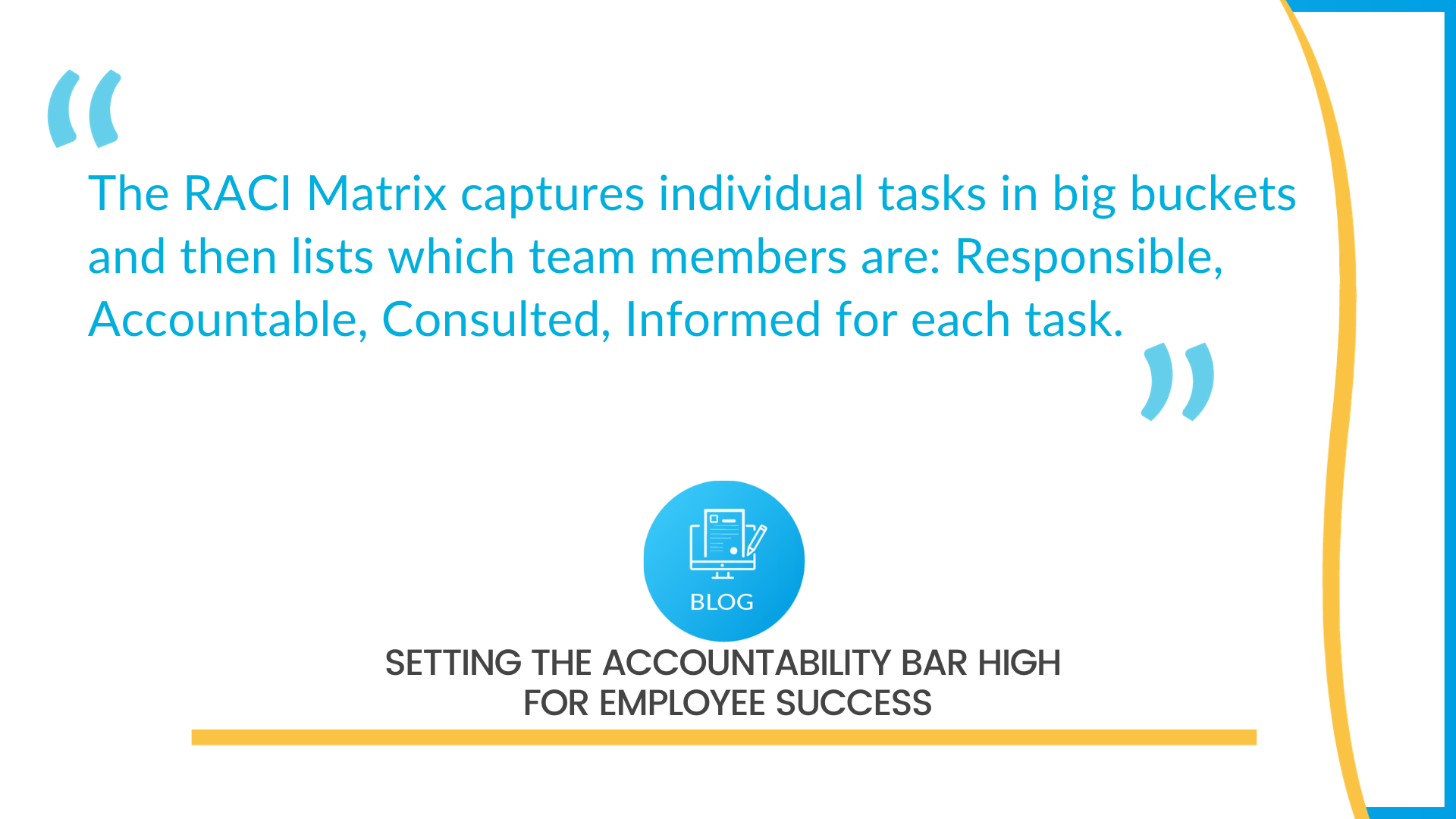Setting the Accountability Bar High for Employee Success
Nearly everyone agrees that keeping good employees is easier than finding and attracting new talent. But beyond that, the value of engaged employees connects directly to your company’s bottom line. Engaged employees:
- Increase profitability. Invested employees work harder, and deliver better customer service.
- Higher productivity. Employees work fast, strong, and hard when they enjoy what they are doing and where they work.
- Reduced absenteeism. An unhappy, disengaged employee is more likely to call off work.
One secret for successful engagement starts with providing clarity around the roles and responsibilities of your team in order to drive accountability—and, ultimately, productivity and success.
Inspiring Performance
To show each team member exactly what their role encompasses, how success is measured, and where they fit the organization, start with a goal-setting sheet built on SMART objectives. That document is supported by individualized scorecards for every team member that integrates across the business, top to bottom. Remember, holding your team accountable for their responsibilities and goals can’t be accomplished without each member knowing exactly what is expected of them. Eliminating “surprise” responsibilities also helps employees feel confident as they set priorities. Having tasks captured in a spreadsheet can then drive your quarterly and annual reviews with each member of the team, tweaking and building on that document at each step.
The Revered RACI Chart
The RACI chart is rooted in those scorecards but takes clarity of role and responsibilities to the next step—the team level. A RACI chart is a simple spreadsheet that captures everyday job tasks in big buckets. For example, a marketing team might have lead gen, public relations, events, digital content, social media, etc. You can use your team scorecards as guidance. Once the RACI chart task list is complete, list out which team members are Responsible, Accountable, Consulted, Informed for each task (thus, the name …). Armed with this document, every single team member can see at a glance what they are held accountable for individually and as part of the larger team, who they should work with to execute each task and helps them to clearly understand what other team members need to be in the know. It also directs the bigger team if they need help with a particular activity.
Collaboration is Key
Don’t forget to work WITH your team to create these documents. By creating a forum within your business where teams discuss challenges and issues together, you help employees see challenges such as the RACI chart as a project to solve as a team. As your team and organization evolve—growing or changing—be sure to address changes to scorecards and the RACI chart during quarterly strategy sessions and an annual vision–building retreat to make sure your team remains clear on how and why roles and responsibilities may be changing—giving them the opportunity to work together to solve challenges those changes may bring. Having a seat at the table and control over their roles helps keep them invested, involved, and engaged.

